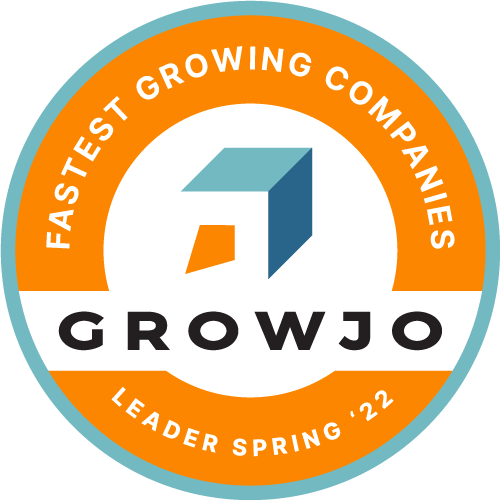Developing a Digital Content Strategy for 2022
The shift from strict quarantine restrictions into hybrid working conditions has started to effectively change the world for good. In the business world, this serves as a sign to once again create a digital content strategy that serves their audiences better.
The pandemic has solidified content marketing as an avenue of communicating with audiences for companies worldwide. A report by The Content Marketing Institute indicated major changes wherein marketers saw more improvements by using an empathetic approach in content marketing.
They also found that two-thirds (⅔) of marketers actually expect to increase spending on content marketing in 2022.
With that in mind, it becomes highly important to have a digital content strategy that makes spending fruitful for all businesses.
In this article, you’ll discover the key elements that make up a digital content strategy, how to build one, and tips on how to execute it well.
What is a Digital Content Strategy?
Digital content, or digital media, is any digital file relayed to end-users. It comes in highly digestible forms like text, audio, video, images, animations, etc.
Content strategist and architect, Steven Grindlay, describes a digital content strategy as the process of “taking that content and systemizing it” for the benefit of both the creator and the audience.
As the creator or producer of marketing content, your digital content strategy should inform your team of the what, who, when, where, and how of your marketing content. This means planning your content, audience, schedule, format, and distribution platform.
What You Need
To start creating, you need to know what your desired output is, and what the fundamental building blocks are. Here are the key elements that your digital content strategy should have before you execute it.
Editorial Content Calendar
At the very least, your content calendar should let you know which pieces of content are going to be published on which dates. A highly effective calendar will also indicate all the moving parts for the rest of your team.
Using a collaborative platform like ClickUp or Asana can help you create an editorial calendar that breaks down the tasks related to creating and publishing each piece of content you’re planning to release.
Scheduling tools like Later, Buffer, and Hootsuite can help you leverage automation to work more efficiently in publishing your content at the right time, with the right copy, hashtags, etc.
Content Direction and Creation
Your strategy should also include your plans for content production. This refers to the overall direction of where you’d like your content to lead your audiences, as well as who’s going to create your content.
For smaller companies, the direction could be a collaborative effort between the content creator and the founder. Larger organizations will typically have a content strategist work with teams of graphic designers, video editors, and writers.
There should be an overarching goal in your content strategy so your creators can create content according to the emotion your brand should evoke within your audiences.
You could direct a strategy that encourages audience engagement, one that focuses more on informing your target market about your products, or even one that leads audiences to purchase.
Technical SEO and Research
On the more technical side of your strategy, you will need search engine optimization (SEO) to further amplify your content’s reach.
Search engine optimization refers to making sure your website and other digital platforms are positioned for the highest possible traffic and visibility from search results.
Considering that 75% of users actually interact with the first page of search results, it’s essential to include SEO in a fruitful plan.
SEO can range from practicing the use of research-based keywords in your writing to optimizing your website’s metadata, getting backlinks, tracking loading speeds, etc.
Highly effective SEO gets your web pages on the first page of search results based on your targeted keywords.
Copywriting
Text is content, and text is everywhere. The words you choose to represent your company on print-outs and digital media directly impact your relationship with your customers.
This is why copywriting is essential to businesses of all sizes. It turns strangers into prospects, nurtures prospects into purchasing customers, fosters loyalty that leads to repeat purchases, and so much more.
What you need here is to determine the relationship you want between you and your customers, and build a tone and voice guide. This should include keywords you’d like customers to attach to your brand’s image and recall.
Copywriting will appear in your email marketing campaigns, advertisements, social media posts and graphics, and product description pages among others.
As such, it’s essential to have some skill in copywriting for your business. It’s also common practice to hire copywriters or to outsource and delegate this task.
Trend and Market Research
A profitable business strategy should always be backed by research. Your digital content strategy should be founded on research about your market, the type and format of content they prefer, as well as the elements they like to see from others in your industry or space.
Knowing your audience is fundamental in knowing how you will communicate the value of your business. Content marketing is communication, and the clearer your message can be received, the better your strategy will be.
Research about your market will reveal a huge part of how you should approach creating and distributing content to your audience. Staying updated with trends will help you maintain relevance among your audience.

Building Your Digital Content Strategy
Content is expected to keep its momentum in being a top priority for marketers this year. With pandemic restrictions easing in more and more places, adjustments are needed to accommodate hybrid content, as well as more powerful creation from personal collaborations. Here is a step-by-step guide to building your digital content strategy for 2022.
Set Goals
Goal setting is important in any strategic planning. Knowing what you want out of a project helps keep your goals attainable, measurable, and most importantly, time-bound. Being specific with your desired outcome is the key factor in making an overall realistic goal and plan.
Start out by recalling your business goals. Break it up into smaller goals and identify the immediate milestones you can target. What’s also important here is that the goals you target are aligned with what your business currently needs.
Your business’s phase comes into play in this area of the plan. If your business needs to penetrate your target market, then you may want to consider a content strategy that prioritizes building credibility through thought leadership content, strong branding, and even building a strong backlink profile for SEO.
Identify Your Audience
The next step is to identify your target market and create a customer profile of the people you want to reach with your message.
Identifying your target audience includes determining their needs and wants when it comes to the digital content that they consume. Do they prefer videos over images? Which platforms are they mostly using? How do they want to receive marketing content?
These should help you create the ideal persona your strategy should connect your brand to. An example profile would be B2B purchasing directors and managers who prefer to be reached via email and are highly responsive to ads on YouTube.
This is information that you should be able to deduce from your market research using demographic reports, competitive analysis, etc.
List Down Your Topics
Go through a brainstorming session to list down all the topics you know are relevant in your area of business. Research topics your business uniquely introduces into the market, as well as content that is currently relevant to your audience.
Use all that information to create a bank of topics that you can and want to deliver as content to your audience.
Doing this can also help you figure out how you will publish your content. Perhaps podcasts are the best way to bring out the most value. Maybe you can even create motion graphics as your target audience prefers on social media.
As your marketing team grows, you’ll have this bank of topics to use as a reference when creating your editorial calendar. This will help you avoid running out of fresh and new content to publish on the internet.
Choose Your Content Format
As we’ve mentioned, content comes in so many forms. If you’re just starting out, it’s very important that you pick which formats you can produce with the team that you have.
While larger organizations are able to create more content for multiple distribution channels, you may have to work on a smaller scale.
This can look like a video turned into a podcast, published with show notes, and promoted with social media graphics. You can also post snippets of your video on TikTok, Instagram Reels, and YouTube Shorts.
List The Platforms You’ll Use
There are so many platforms wherein you can publish your digital content nowadays. You can post content directly on your website, there’s a huge list of social media apps to choose from, there’s a healthy selection of email services, and there are eCommerce platforms, too.
You can pick out which platforms have more of your market in their user base, as well as which ones will run which content.
This can look like using Twitter to participate in current events and trends, posting all updates on Facebook, running product ads on Instagram Stories, and so forth.
Identify Your Tech Stack
Your tech stack or app stack refers to which technologies you’ll be using to execute your strategy.
As we’ve mentioned, you can use scheduling tools to leverage the power of automation. For larger organizations, digital asset management systems can be very useful. A content management system like WordPress or Wix is common if you’re starting out with publishing content.
There are also the apps you need for productivity like Trello, Monday, and ClickUp. Your video editor or content creators may choose Canva or Adobe products. Podcast production apps should also be considered if you’re planning to produce those as well.
What’s important here is to check out which ones you can work with considering your (or your team’s) mastery of these apps, as well as your budget.

Executing Your Digital Content Strategy
Your digital content strategy will need as many hands in planning as in execution. Larger organizations have content strategists, multiple creators, and even IT managers for digital marketing.
Outsourcing to virtual assistants is also common practice. Especially for entrepreneurs who are starting to feel the growth of tasks that comes with a business’s growth.
If you’re starting out with digital marketing for your business, outsourcing to marketing virtual assistants can be very helpful in creating and executing a small-scale, yet impactful content strategy. What’s best here is that you get to save costs while still executing your strategy.
If you’re interested in working on a digital content strategy with marketing virtual assistants, feel free to fill out this form, and one of our consultants will get in touch with you.
More Articles From Virtudesk:
Share this article
Meet our Most Trusted
Partners & Clients

Byron Lazine
Co-Founding Chief-of-Operations at BAM (Broke Agent Media)I’ve been using Virtual Assistants for years throughout all of my companies. Once we found Virtudesk the process got even easier and allowed us to scale out our hiring. Highly skilled and accountable professionals. 100% recommend!

Rebecca Julianna James
Realtor / Content CreatorBefore getting started with Virtudesk I had my doubts that they would find what I was looking for. I needed a very particular person to add to my team and let me tell you I am highly pleased! My virtual assistant Myril is the best! I am excited to grow my socialmedia accounts with her. Thank you Virtudesk!

Chelsea Erickson
Realtor La Belle RE GroupI am very happy with the assistance Virtudesk is providing for my real estate business. This is a newer position for my company and we are working through the creation and efficiency.

















